Wilderness City: What to See, Do and Eat in Whitehorse

Reflection of the Northern Lights on Nares Lake. Photo: Jonathan Tucker
If it’s 9 o’clock in the morning and a fat moon is still hanging in a darkened sky, you’re probably in Whitehorse in early February. Which is a surprisingly exciting place to be.
The capital of Yukon and largest city in northern Canada (population around 32,000) may be notoriously cold and dark in winter, and endlessly day-lit in summer. But robust inhabitants, including proud eccentrics known colloquially as the “colourful five per cent,” aren’t about to let a challenging environment stand in the way of a good time.
February in Whitehorse is when things unmistakably ramp up toward peak season as the days lengthen and thaw. Fittingly, there are myriad organized activities on offer alongside the territory’s famed natural wonders, chief among them the spectacular Northern Lights.
“Aurora,” as locals call them, short-handing “aurora borealis,” is the main winter draw for tourists from across the globe, followed by dogsledding, snowshoeing, snowmobiling, hiking and ice fishing. The city’s proximity to vast and primeval nature is its biggest asset. (Scroll down for Yukon fun facts.)
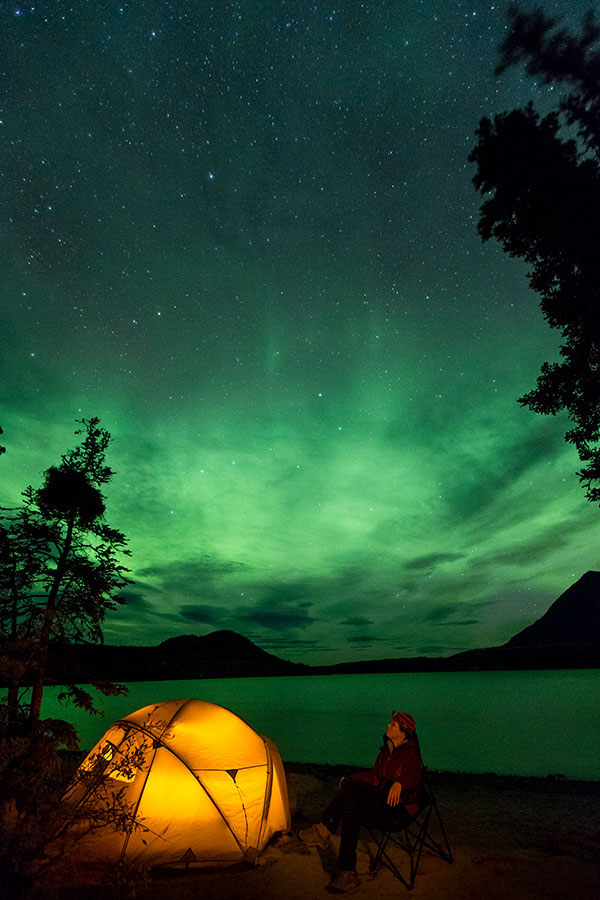
As its tourism site notes, “Yukon is situated in the northwest corner of Canada’s continental mainland. Bounded by the 60th parallel in the south, the Beaufort Sea in the north, Alaska to the west and the Northwest Territories to the east, it covers an area of 482,443 km²,” an area slightly larger than California but with a population of just over 42,000, far short of the 39 million elbowing for space in Cali.
“[Yukon] is a land rich with dramatic mountain vistas, wild rivers, and crystal-clear lakes. Close to 80 per cent remains pristine wilderness.” If you’re bored — or hungry — in Whitehorse, you’re not trying, even in winter. A visit there offers way more diversity than a beach holiday, in manageable Canadian dollars.
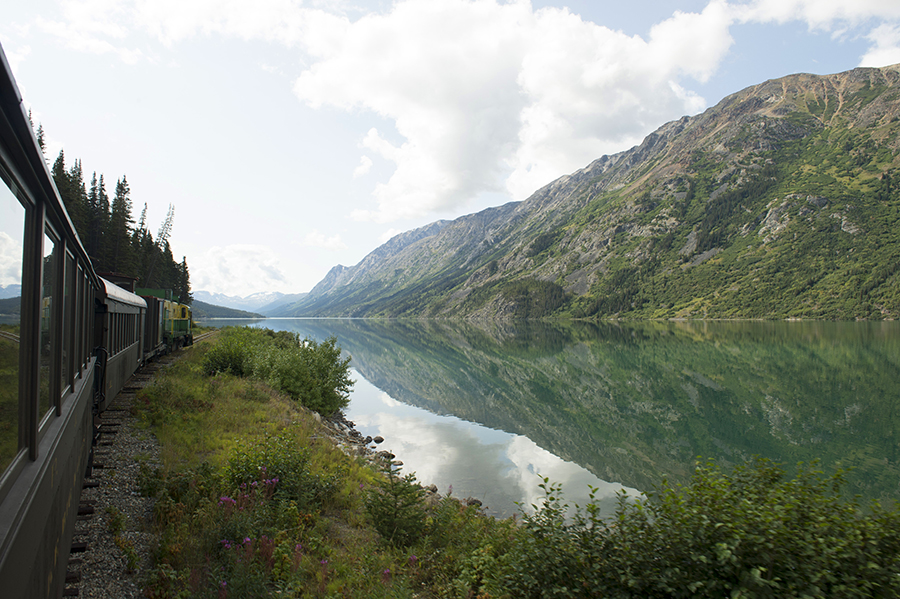
Try Glass Blowing
Meeting place, cultural hub, and adjoined by a tiny, excellent Mexican restaurant showcasing its wares, Lumel Studios gathers a diverse and approachable group of artists and sculptors from across Canada to lead guests through the process of creating beautiful (sometimes wonky) objects made of multicoloured glass heated in ovens at 1,200 degrees.
Founded in 2016 by Luann Baker-Johnson, Lumel offers workshops for every age and ability, catering to school and team-building groups as well as walk-ins, helping guests spin, smush, and shape molten glass into paperweights and small vases during informative, hands-on sessions. It’s incredibly fun to sculpt something from scorching hot glass that you can take home. And a visit is illuminating in other ways when one starts chatting with staffers.
Among the studio’s services are implementing cremated ashes into works of glass-blown art. One Lumel artisan recalls how a man whose beloved dog had died incorporated its ashes into a pendant he then wore as a keepsake.
“Ashes become art that is treasured by the family,” explains Hilary, who adds that Lumel personnel can also create custom glass-blown urns, like a John Deere tractor created for a departed farmer. And while the ashes-into-glass concept may not appeal to everyone, Hilary confirms it’s very meaningful for those on board, who can participate in the object’s creation if they choose.
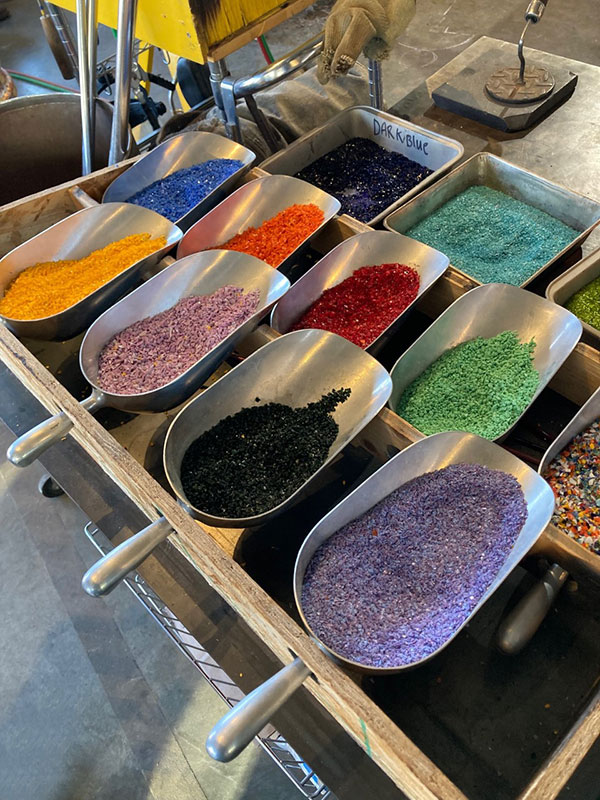
Observe Wildlife
Dress warm, bring binoculars and head about 30 minutes outside Whitehorse to the Yukon Wildlife Preserve. Opened in its current incarnation in 2004, the sprawling outdoor space is home to multiple species including moose, bison, lynx, elk, caribou, arctic fox, mule deer and muskox, most visible to visitors who can book guided hop-on, hop-off tours, hike, or travel via rented kick-sleds.
This is not a zoo. The animal-roaming areas are open-air and very large, though sometimes surrounded by electrified fencing to keep out would-be predators seeking a free meal. The moose site alone occupies five square kilometres. The preserve also operates a Wildlife Research and Rehabilitation Centre, which opened in 2012 and has since tended to hundreds of animals and birds.
Our guide, lifelong Yukoner Teena Dickson of Who What Where Tours, recalled visiting the long-standing and much-storied place as a child when it was the family-owned Yukon Game Farm. Today, it’s a fascinating destination for visitors to see majestic creatures living safe, secure and very well-fed lives.
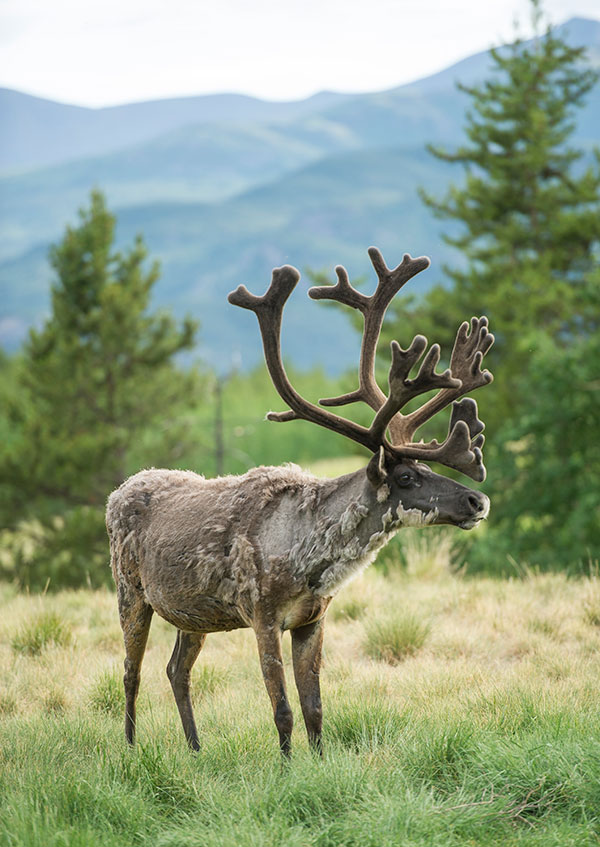
See the Northern Lights
A glimpse of the spectacular, shapeshifting, colour-drenched Northern Lights is not guaranteed during every visit to Yukon. Cloud cover can conceal the magnificent hues, which appear because of disturbances in the magnetosphere caused by the solar wind. (Of course, you knew that.) But even those not lucky enough to see the show in the sky, like yours truly, will doubtless enjoy an offbeat late-night outing with friends.
Several operators host Northern Lights tours, which typically include transportation to and from Whitehorse to a viewing area outside the city, where bonfires and heated sheds stocked with hot drinks help stave off the cold. Northern Tales, which hosted us — and which also operates tours through the Wildlife Preserve — included a knowledgeable driver who broadcasted a sense that we could take all the time we wanted to photograph stuff, imbibe by the woodstove, and marvel at the absolute silence of the ethereal snow-covered landscape in the middle of the night.
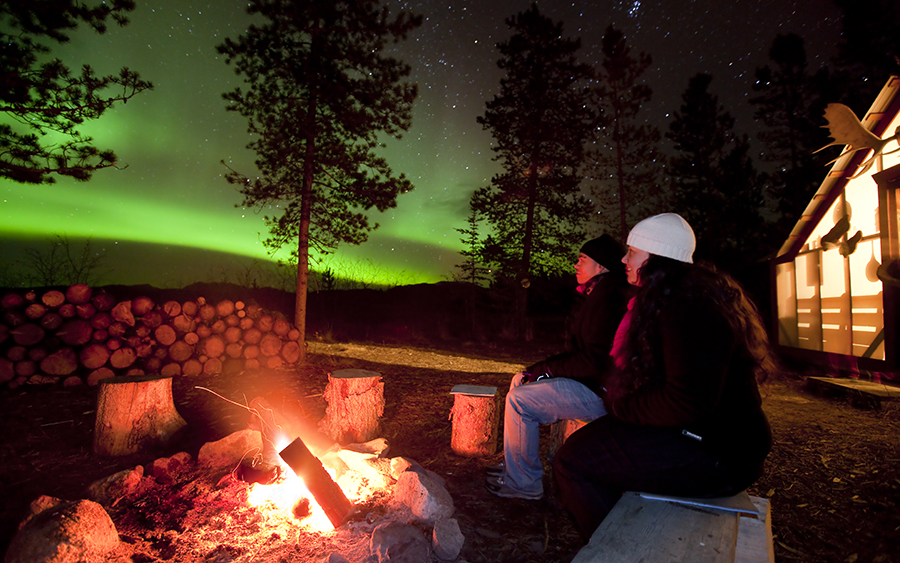
Gorge on Film
Anyone who has ever tried to take in multiple films at a big-city festival like the Toronto International Film Festival knows it can be overwhelming, with demand outstripping supply, massive crowds forming massive queues to enter theatres, and venues spread far apart. No such headaches at Whitehorse’s Available Light Film Festival, Canada’s largest film festival north of the 60th parallel, which just wrapped its 21st edition screening 101 films in two theatres, one in central Whitehorse.
Multiple marquee international films that played TIFF in September 2022 and went on to gather Oscar nominations — Living, The Whale, All the Beauty and Bloodshed, Aftersun — also screened at this year’s ALFF alongside a clutch of acclaimed Canadian features and documentaries, many featuring First Nations talent in front of and behind the camera.
Adding a film festival to a travel itinerary is genius. It brings instant culture while offering respite from the elements. Many screenings at ALFF were not packed, meaning last-minute decisions on movies were doable, rarely the case at those big-city festivals. And many films featured post-screening Q&A’s with directors in attendance. Whitehorse’s strong coffee and craft beer culture — the city boasts five breweries! — equals lots of hospitable places to trade post-film impressions with travelling companions.
Watch Pro Dogs Mush!
Another main attraction on the calendar each February since 1984 is the Yukon Quest International Sled Dog Race. “Covering 1,000 miles (1,600 km) between Whitehorse, Yukon and Fairbanks, Alaska during the depths of winter, the Yukon Quest is known for excellence in canine care and fostering the traditions of northern travel by dog sled,” its site notes. “The race alternates its starting points every year with even-numbered years, starting in Fairbanks and odd-numbered years starting in Whitehorse.”
As it happened, Whitehorse was the start point during our recent visit, and gadzooks what a blast! Arriving about an hour before the 11 a.m. start, we freely roamed the parking lot where handlers and mushers prepped their highly athletic canines with warm booties and words of encouragement.
There was so much for the urban novice to learn: not all mushing dogs are huskies, women are well-represented among competitors, individual dogs can have sponsors, dogs are checked by the race veterinarians and supported by the Yukon Quest Veterinary Program at checkpoints throughout the race … the fun facts went on. Gathering at the starting line to watch the teams depart — the dogs going bonkers with adrenaline — was genuinely thrilling for both adults and children. And very apropos.
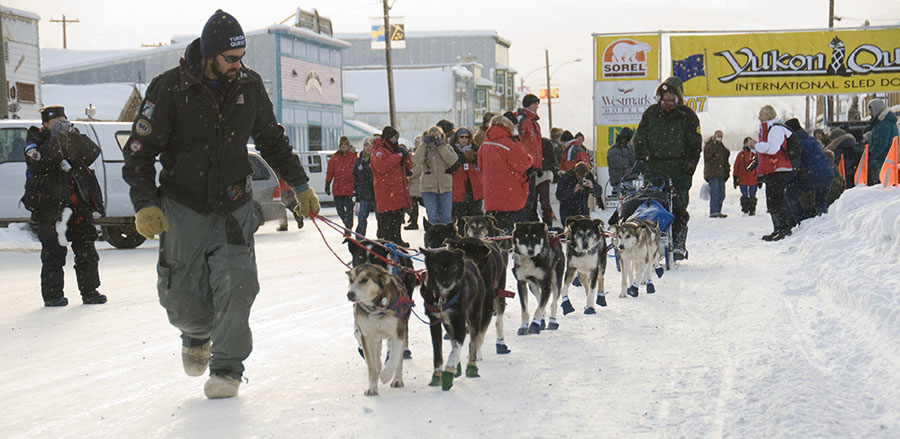
Eat, Eat, Eat!
Whitehorse may not be a foodie destination (yet) but no one is going hungry. A handful of restaurants dominate the core, among them Wayfarer Oyster House, offering seafood sourced from the Yukon, Alaska, and B.C., as well as locally sourced meats, and game-centric Belly of the Bison, serving Elk Roulade, Duck Breast, Alaskan Sockeye Salmon and, of course, Bison Bolognese. It sits inside the relatively swank Edgewater Hotel.
Also notable is the cheekily named Burnt Toast Café, excellent for morning and midday meals. At brunch one afternoon, a Smoked Salmon Benny with spinach and house-made hollandaise along with a Mimosa was delicious, as was the Maple Banger and Eggs featuring locally made maple-infused Bratwurst sausage served with two eggs. Also worth a morning or midday visit is Bullet Hole Bagels, where Montreal-style bagels made on-site are stacked (and I mean stacked) with sandwich-friendly toppings.
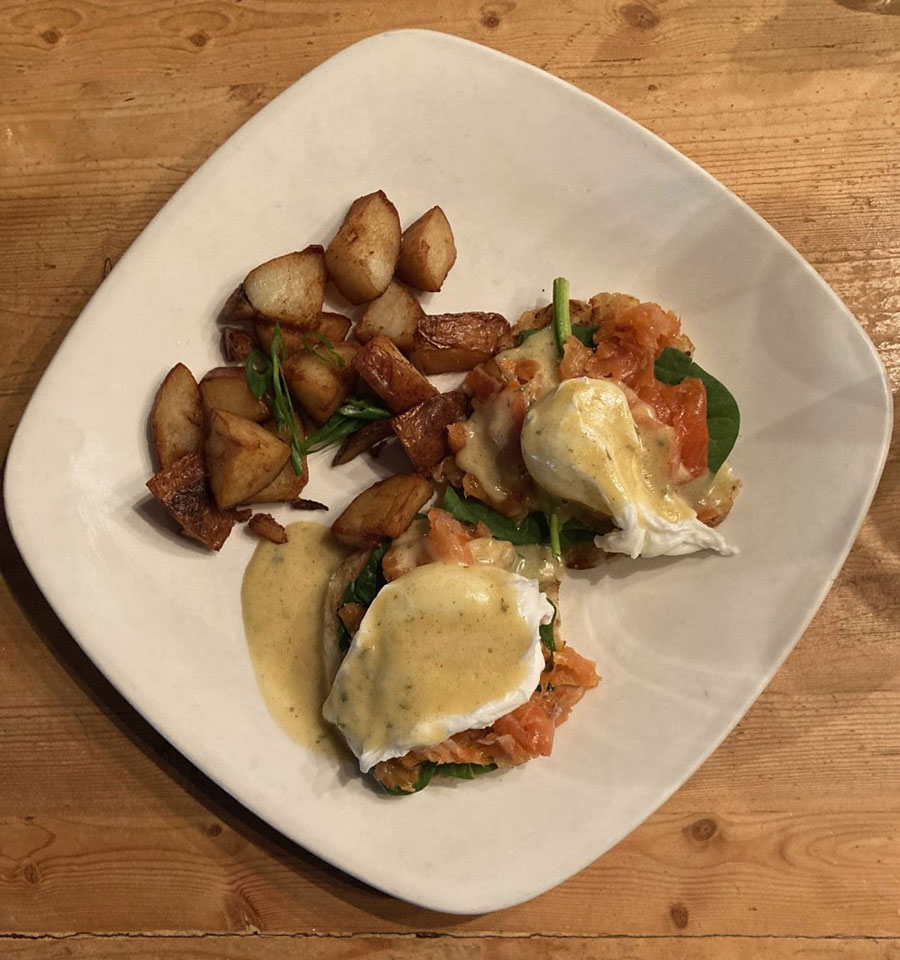
La Cara offers straight-up Mexican food opposite eye-popping neon art. Elsewhere, sister establishments Dirty Northern and Miner’s Daughter serve elevated pub fare abetted by a slate of inventive cocktails. Either is an ideal destination after a browse through the compact Horwoods Mall across the street. It showcases hand-crafted jewelry and accessories, an upscale cheese boutique, and a yarn store, among others.
Vegetarians will find plant-based options available though vegans may need to strategize in this meat-forward locale. One note: Much of Whitehorse closes on Sunday, so be sure to call and not assume a restaurant or shop will be open. Also, if you’re shopping, BYOB — bring your own bags.
The environmentally minded Yukon bag ban outlawed single-use plastic bags in 2022, and single-use paper bags Jan. 1 of this year. The territory has a lot of natural beauty to protect. Let’s do it.
Whitehorse Fun Facts
- It is estimated there are twice as many moose as people in Yukon
- Some 80 per cent of visitation to Yukon happens in summer
- Most popular summer activities include paddling, hiking, mountain biking, and hiking
- Germans comprise the largest contingent of international visitors; a direct flight from Frankfurt to Whitehorse, a.k.a. the Wilderness City, operates in summer (via Condor)
- Yukon is home to 14 different First Nations representing eight different language groups
- Yukon is also home to the tallest mountain in Canada, Mt. Logan, and the largest, non-polar ice field in the world, Kluane National Park and Reserve
- The Eclipse Nordic Hot Springs, which opened in May 2022 on the site of the historic Takhini Hot Springs, offers a fusion of Japanese, Turkish and Nordic design for an exciting new Boreal experience (meaning, yes, the pools are located outdoors)
RELATED: